-
 Bitcoin
Bitcoin $84,278.9725
-0.42% -
 Ethereum
Ethereum $2,296.3504
-1.69% -
 Tether USDt
Tether USDt $0.9991
0.05% -
 XRP
XRP $2.1772
-0.40% -
 BNB
BNB $601.6772
-1.25% -
 Solana
Solana $136.3518
-0.02% -
 USDC
USDC $0.9999
0.00% -
 Dogecoin
Dogecoin $0.2055
1.05% -
 Cardano
Cardano $0.6393
-1.38% -
 TRON
TRON $0.2274
0.29% -
 Chainlink
Chainlink $15.0150
-1.37% -
 Litecoin
Litecoin $124.9704
0.80% -
 Avalanche
Avalanche $22.1008
0.66% -
 Stellar
Stellar $0.2810
-1.28% -
 Toncoin
Toncoin $3.4297
-1.57% -
 UNUS SED LEO
UNUS SED LEO $9.2281
1.53% -
 Sui
Sui $2.7544
-4.35% -
 Shiba Inu
Shiba Inu $0.0...01432
-0.21% -
 Hedera
Hedera $0.1999
1.37% -
 Polkadot
Polkadot $4.8521
2.05% -
 MANTRA
MANTRA $7.3522
3.42% -
 Hyperliquid
Hyperliquid $20.5480
2.01% -
 Ethena USDe
Ethena USDe $0.9992
0.05% -
 Bitcoin Cash
Bitcoin Cash $295.4055
0.68% -
 Dai
Dai $0.9998
0.00% -
 Bitget Token
Bitget Token $4.1437
3.49% -
 Uniswap
Uniswap $7.8015
-2.29% -
 Monero
Monero $208.6870
-3.21% -
 NEAR Protocol
NEAR Protocol $3.0357
-0.20% -
 Aptos
Aptos $6.0934
1.44%
How to bind a card to web3 wallet
Binding cards to Web3 wallets provides seamless cryptocurrency purchasing, payment initiation, and fund transfer options within the wallet, enhancing usability and streamlining financial transactions.
Oct 20, 2024 at 03:00 pm

How to Bind a Card to Web3 Wallet
Web3 wallets are becoming increasingly popular as a convenient and secure way to manage cryptocurrencies and interact with decentralized applications (dApps). However, in order to fully utilize the capabilities of a Web3 wallet, it is often necessary to bind a card to it. This allows users to easily purchase cryptocurrencies directly through their wallet, as well as to make payments and transfer funds to other users.
There are a few different ways to bind a card to a Web3 wallet, depending on the specific wallet provider. However, the general process is as follows:
- Create a Web3 wallet. If you don't already have a Web3 wallet, you will need to create one. There are many different Web3 wallet providers available, so you should choose one that meets your specific needs.
- Navigate to the settings menu. Once you have created a Web3 wallet, you will need to navigate to the settings menu. This is typically located in the upper right-hand corner of the wallet interface.
- Find the "Payment Methods" section. In the settings menu, you should find a section labeled "Payment Methods."
- Click on the "Add Card" button. In the "Payment Methods" section, you should see a button labeled "Add Card." Click on this button to begin the process of binding a card to your wallet.
- Enter your card information. You will be prompted to enter your card information, including your card number, expiration date, and CVV code.
- Verify your card. Once you have entered your card information, you will need to verify your card. This is typically done by sending a small amount of money to your card.
- Complete the binding process. Once your card has been verified, you will need to complete the binding process. This typically involves clicking on a button labeled "Bind Card."
Once you have successfully bound a card to your Web3 wallet, you will be able to easily purchase cryptocurrencies and make payments directly through your wallet. This can save you time and money, as you will no longer need to go through a third-party exchange.
Disclaimer:info@kdj.com
The information provided is not trading advice. kdj.com does not assume any responsibility for any investments made based on the information provided in this article. Cryptocurrencies are highly volatile and it is highly recommended that you invest with caution after thorough research!
If you believe that the content used on this website infringes your copyright, please contact us immediately (info@kdj.com) and we will delete it promptly.
- Bitcoin Price Likely to Hit $81k Says Analyst While This Altcoin Rises 234x in Days
- 2025-02-28 09:15:33
- Ripple's altcoin XRP falls 0.95% on February 27th, with weekly and monthly timeframes revealing a not-so-optimistic outlook.
- 2025-02-28 09:15:33
- Ripple Releases Its 2025 Strategic Development Plans, Focusing on Enhanced Institutional DeFi and Lending
- 2025-02-28 09:15:33
- Web3Bay Presale Soars Past $1.54M as Bitcoin Drops to $95,000
- 2025-02-28 09:10:33
- Seeking high-growth cryptos in this market chaos? Bitcoin, XRP, and other cryptocurrencies tried to recover early Thursday
- 2025-02-28 09:10:33
- Bitcoin (BTC) Exchange-Traded Funds (ETFs) Offering Staking Capabilities Could Significantly Boost Institutional Engagement
- 2025-02-28 09:10:33
Related knowledge
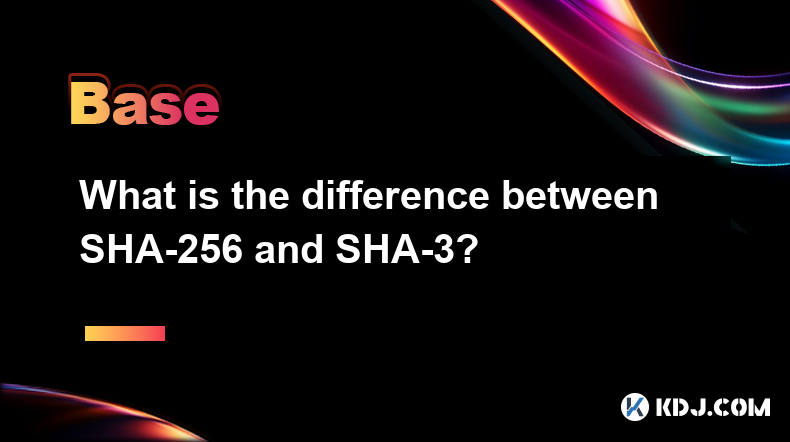
What is the difference between SHA-256 and SHA-3?
Feb 27,2025 at 07:37pm
What is the difference between SHA-256 and SHA-3?Key Points:SHA-256's Design and Security: SHA-256, part of the SHA-2 family, is a widely used cryptographic hash function based on a Merkle–Damgård construction. Its security relies on the assumed difficulty of certain mathematical problems. While it hasn't been demonstrably broken, ongoing research and t...
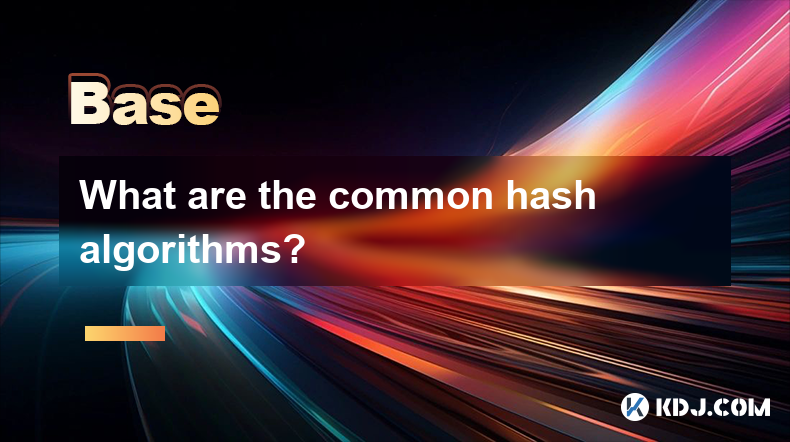
What are the common hash algorithms?
Feb 28,2025 at 02:06am
What are the Common Hash Algorithms? A Deep Dive into Cryptographic Hash FunctionsKey Points:This article explores various common hash algorithms used in the cryptocurrency space, detailing their functionalities, strengths, weaknesses, and applications.We will delve into the specifics of SHA-256, SHA-3, Scrypt, Blake2b, and Keccak-256, explaining their ...
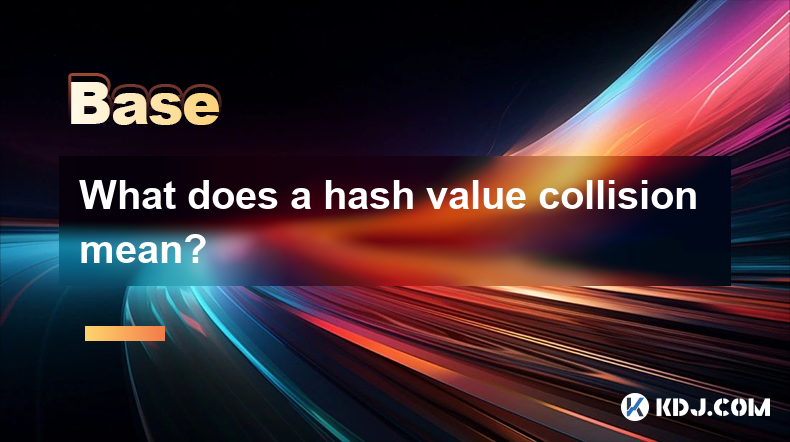
What does a hash value collision mean?
Feb 28,2025 at 12:18am
What Does a Hash Value Collision Mean? A Deep Dive into Cryptographic Hashing and its ImplicationsKey Points:A hash collision occurs when two distinct inputs produce the same output hash value. This is a critical vulnerability in cryptographic systems relying on hash functions for data integrity and security.The likelihood of a collision depends on the ...
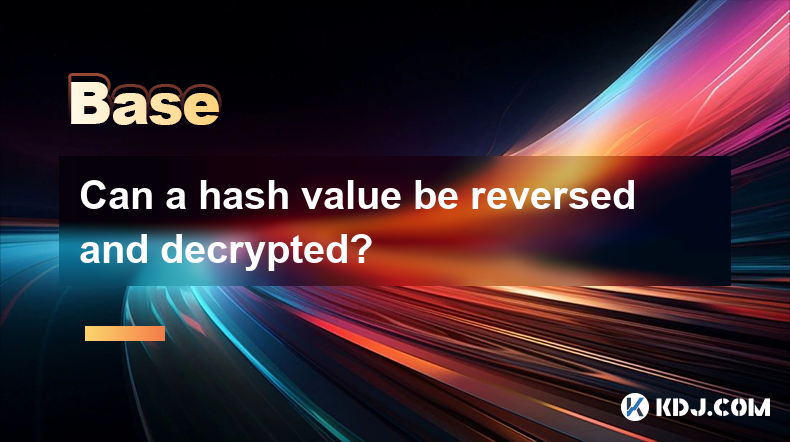
Can a hash value be reversed and decrypted?
Feb 27,2025 at 06:00pm
Can a Hash Value Be Reversed and Decrypted?Key Points:Hash functions are one-way cryptographic functions; reversing a hash to obtain the original input is computationally infeasible.While technically not impossible, reversing a hash requires an immense amount of computational power and time, making it practically impossible for all but the shortest and ...
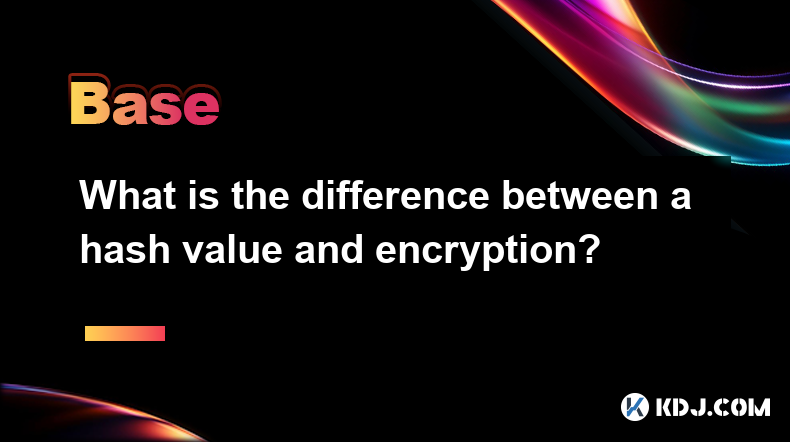
What is the difference between a hash value and encryption?
Feb 27,2025 at 08:01pm
What is the difference between a hash value and encryption?Key Points:Hashing: A one-way function producing a fixed-size output (hash) from any input, ensuring data integrity but not confidentiality. It's crucial for blockchain technology's security.Encryption: A two-way process involving an algorithm and a key to transform readable data (plaintext) int...
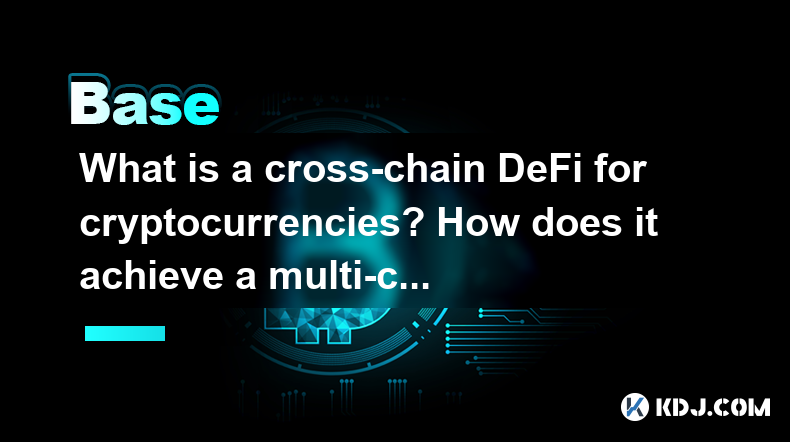
What is a cross-chain DeFi for cryptocurrencies? How does it achieve a multi-chain financial ecosystem?
Feb 26,2025 at 11:24pm
What is a Cross-Chain DeFi for Cryptocurrencies? How Does it Achieve a Multi-Chain Financial Ecosystem?Key Points:Definition of Cross-Chain DeFi: Cross-chain DeFi refers to decentralized finance (DeFi) applications and protocols that operate across multiple blockchain networks, enabling interoperability and bridging the gaps between isolated ecosystems....

What is the difference between SHA-256 and SHA-3?
Feb 27,2025 at 07:37pm
What is the difference between SHA-256 and SHA-3?Key Points:SHA-256's Design and Security: SHA-256, part of the SHA-2 family, is a widely used cryptographic hash function based on a Merkle–Damgård construction. Its security relies on the assumed difficulty of certain mathematical problems. While it hasn't been demonstrably broken, ongoing research and t...

What are the common hash algorithms?
Feb 28,2025 at 02:06am
What are the Common Hash Algorithms? A Deep Dive into Cryptographic Hash FunctionsKey Points:This article explores various common hash algorithms used in the cryptocurrency space, detailing their functionalities, strengths, weaknesses, and applications.We will delve into the specifics of SHA-256, SHA-3, Scrypt, Blake2b, and Keccak-256, explaining their ...

What does a hash value collision mean?
Feb 28,2025 at 12:18am
What Does a Hash Value Collision Mean? A Deep Dive into Cryptographic Hashing and its ImplicationsKey Points:A hash collision occurs when two distinct inputs produce the same output hash value. This is a critical vulnerability in cryptographic systems relying on hash functions for data integrity and security.The likelihood of a collision depends on the ...

Can a hash value be reversed and decrypted?
Feb 27,2025 at 06:00pm
Can a Hash Value Be Reversed and Decrypted?Key Points:Hash functions are one-way cryptographic functions; reversing a hash to obtain the original input is computationally infeasible.While technically not impossible, reversing a hash requires an immense amount of computational power and time, making it practically impossible for all but the shortest and ...

What is the difference between a hash value and encryption?
Feb 27,2025 at 08:01pm
What is the difference between a hash value and encryption?Key Points:Hashing: A one-way function producing a fixed-size output (hash) from any input, ensuring data integrity but not confidentiality. It's crucial for blockchain technology's security.Encryption: A two-way process involving an algorithm and a key to transform readable data (plaintext) int...

What is a cross-chain DeFi for cryptocurrencies? How does it achieve a multi-chain financial ecosystem?
Feb 26,2025 at 11:24pm
What is a Cross-Chain DeFi for Cryptocurrencies? How Does it Achieve a Multi-Chain Financial Ecosystem?Key Points:Definition of Cross-Chain DeFi: Cross-chain DeFi refers to decentralized finance (DeFi) applications and protocols that operate across multiple blockchain networks, enabling interoperability and bridging the gaps between isolated ecosystems....
See all articles

















































































